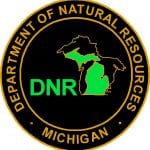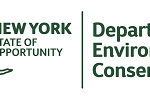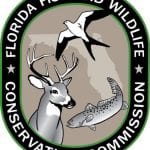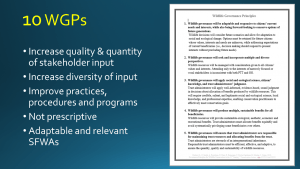 Adopting and practicing governance norms reflecting Public Trust Thinking (PTT) and Good Governance (GG) is particularly urgent at this time when the wildlife conservation institution is considering how it will evolve to remain relevant in response to social-ecological change. Governance norms grounded in PTT and GG, applied consistently across organizations will promote more effective conservation that seeks fair allocation of wildlife resource benefits to current and future citizens.
Adopting and practicing governance norms reflecting Public Trust Thinking (PTT) and Good Governance (GG) is particularly urgent at this time when the wildlife conservation institution is considering how it will evolve to remain relevant in response to social-ecological change. Governance norms grounded in PTT and GG, applied consistently across organizations will promote more effective conservation that seeks fair allocation of wildlife resource benefits to current and future citizens.
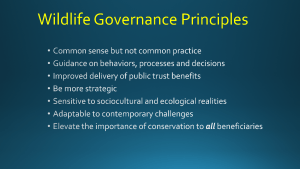 The driving force for change in the wildlife institution is the need for contemporary relevance from a broad suite of stakeholders. Relevance means being valued and supported. This is essential for sustained responsible wildlife conservation. The Wildlife Governance Principles provide a framework for changes to organizational and institutional practices that will result in improved delivery of public trust benefits and good governance expectations.
The driving force for change in the wildlife institution is the need for contemporary relevance from a broad suite of stakeholders. Relevance means being valued and supported. This is essential for sustained responsible wildlife conservation. The Wildlife Governance Principles provide a framework for changes to organizational and institutional practices that will result in improved delivery of public trust benefits and good governance expectations.
The principles are common sense but not always commonly practiced. They provide guidance on behaviors, processes and decisions. They help us design mechanisms to improve our delivery of public trust benefits and be more strategic in our thinking. They can also help us to better understand and be sensitive to social, cultural and ecological realities. The principles help us be more adaptable to contemporary challenges. And ultimately they elevate the importance of conservation to all beneficiaries.
Ten Wildlife Governance Principles
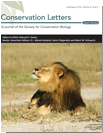 Wildlife governance will be adaptable and responsive to citizens’ current needs and interests, while also being forward-looking to conserve options of future generations.
Wildlife governance will be adaptable and responsive to citizens’ current needs and interests, while also being forward-looking to conserve options of future generations.
Wildlife decisions will consider probable future scenarios and allow for adaptation to social and ecological change. Options are retained for future citizens whose values, interests and needs are unknown, while addressing expectations of current beneficiaries (i.e., decision making that responds to present interests without precluding future needs).
- Wildlife governance will seek and incorporate multiple and diverse perspectives.
Wildlife resources will be managed with consideration given to all citizens’ values and interests. Attending only to the interests of narrowly focused or vocal stakeholders is inconsistent with both PTT and GG.
- Wildlife governance will apply social and ecological science, citizens’ knowledge, and trust administrators’ judgment.
Trust administrators will apply well-informed, evidence-based, sound judgment in decisions about allocation of benefits produced by wildlife resources. This will require credible, salient, and legitimate social and ecological science, local knowledge, and professional expertise, enabling conservation practitioners to meet conservation goals.
- Wildlife governance will produce multiple, sustainable benefits for all beneficiaries.
Wildlife resources will provide sustainable ecological, aesthetic, economic and recreational benefits. Trust administrators allocate benefits equitably and avoid systematically privileging some beneficiaries over others.
- Wildlife governance will ensure that trust administrators are responsible for maintaining trust resources and allocating benefits from the trust.
Trust administrators are stewards of an intergenerational inheritance. Responsible trust administrators are efficient, effective, and adaptive, to ensure the quantity, quality and sustainability of wildlife resources.
- Wildlife governance will be publicly accessible and transparent.
A mutually respectful and productive relationship between beneficiaries and trust administrators is fundamental to wildlife governance. Transparency and broad accessibility are crucial to this relationship.
- Wildlife governance will ensure that trust administrators are publicly accountable.
Appropriate and accessible mechanisms are in place to allow beneficiaries to hold trust administrators accountable.
- Wildlife governance will include means for citizens to become informed and engaged in decision making.
Citizens have the responsibility to be both knowledgeable about and to participate in wildlife governance to ensure their needs are recognized; one trait is insufficient without the other. Holding wildlife trust administrators accountable requires citizens be informed and engaged.
- Wildlife governance will include opportunities for trust administrators to meet their obligations in partnerships with non-governmental entities.
Efficient, effective, and adaptive trust administrators will recognize when the capacity they control or direct is inadequate for sustaining the wildlife trust. Enhancing capacity to meet trust management goals may require partnerships with other individuals and organizations, including private landowners; such partners essentially become trust managers and therefore must adhere to WGPs.
- Wildlife governance will facilitate collaboration and coordination across ecological, jurisdictional and ownership boundaries.
Wildlife resources and beneficiaries’ interests do not fall neatly within existing ecological, jurisdictional, and ownership boundaries. Collaboration and coordination across all types of boundaries improve the effectiveness and adaptability of wildlife governance.
Wildlife Governance Principles Video
Here’s a brief video extracted from a webinar created for the Association of Fish and Wildlife Agencies that explains these 10 principles in more detail:


